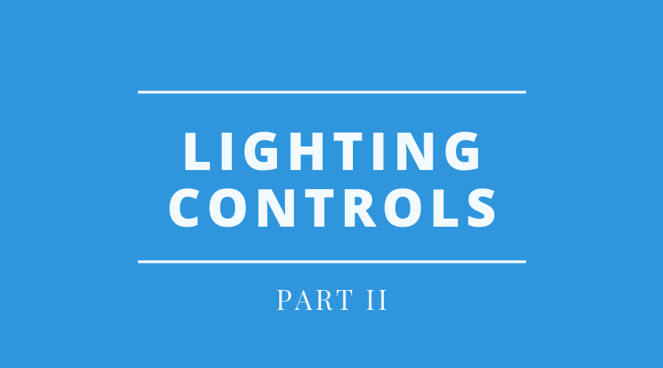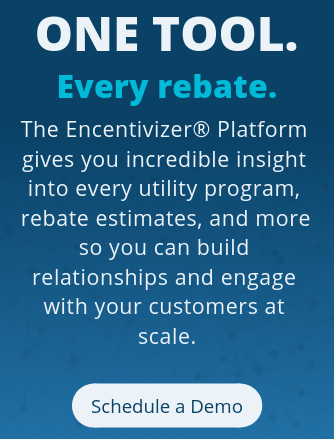
Welcome to part II of our series on lighting controls and rebates!
In the last article we covered the basics of lighting control rebates. We reviewed how utilities categorize and incentivize all kinds of lighting controls. But we kept it simple, focusing on a more “widget” approach to controls. This month’s article focuses on the other approaches to controls, a “systems” approach, which is the basis for incentives that are calculated on an energy savings approach.
If you missed Part I, check it out here.
The energy savings approach to incentivizing lighting controls takes a more holistic view of the environment into which the control is being installed. Building type, space type, interactive factors, annual burn hours, in addition to the actual controlled wattage.
Let’s start with what we see as a common approach amongst retrofit contractors and then we’ll contrast it with the most common utility approaches.
Contractor Approach to Calculating Energy Savings due to Lighting Controls
At Encentiv Energy, we’ve worked with many ESCOs, lighting retrofitters, and electrical distributors. Many of them have a common approach when they want to calculate energy savings to be able to show to their customers: They just reduce the new burn hours in the energy savings calculation.
kWh Savings = (kW Controlled) x (HOU change) x (other adjustment factors)
*Hours of Use (HOU)
What is the HOU change? We’ve seen a number of approaches. Sometimes, they use just a standard percent reduction across all types of controls and spaces, others will try to customize the new burn hours based on their history of installing and measuring such devices.
Utility Rebate program approach to Energy Savings due to Lighting Controls
The utility rebate programs take a slightly different approach. Either use light loggers and expensive M&V time to prove exactly what the savings is, or you can use their adjustment factors.
Utilities have developed a set of adjustment factors, sometimes called Savings Control Factors, that you use to calculate the savings due to lighting controls that they will base their incentive calculation on.
The basic calculation is:
kWh Savings = (kW Controlled) x (Change in Savings Control factor) x (other adjustment factors)
Savings Control factors have been pre-determined by utilities through studies of completed projects and other industry research.
For example, here in Pennsylvania, the PUC has determined that Savings Control factor due to an Occupancy Sensor is 24%. So, if you installed an occ sensor into an environment where there was no previous control, the Change in Savings Control factor would be 24% - 0% = 24%.
In the PA case, the Savings Control Factor for an occupancy sensor is the same in all scenarios, but other utilities will use other variables to determine the savings factor. In Maine, the space type is the determinant, where an open office would be 15% and storage would be 55%. In other states, the factor will vary by both the control type and the space type.
When determining the energy savings from lighting controls to be used when calculating a kWh saving based rebate, we always recommend that you look carefully at the methodology the utility uses. Importantly, don’t change the operating hours in those utility lighting calculators!!! If you are doing an LED retrofit and adding controls, those calculators may take your change in burn hours and apply their adjustment factor and estimate the rebate higher than it should be!!
It is important to note that the utility’s savings control factor may not be the right approach to use when presenting your customer with energy savings information. The utility may be averaging across different building or business types, or averaging across different types of controls. We generally recommend keeping these two calculations separate.
So that brings us to Networked Lighting Controls. I’ll use a definition from the DLC® website, “A networked lighting control system consists of an intelligent network of individually addressable luminaires and control devices, allowing for application of multiple control strategies, programmability, building- or enterprise-level control, zoning and rezoning using software, and measuring and monitoring.”1
NLC Incentive Approaches
For Networked Lighting Controls there are a number of approaches employed. The DLC posts a summary of approaches from member programs (download the file here: https://www.designlights.org/default/assets/File/NLC/NLC%20Program%20Summary%202019(1).xlsx), which was co-developed with Encentiv Energy.
The primary approaches are:
- Per Fixture bonus: Each fixture that is controlled by an NLC system receives an extra rebate
- Watts controlled: The incentive is calculated based on the number of watts that controlled by the NLC systems
- Square foot: The incentive is calculated based on the square footage that the NLC system addresses
- LPD: The incentive is calculated based on how much better the installed lighting is than code, assuming NLC is present in the system
- Custom Energy Savings: Calculate the energy savings from the NLC system, generally including the sensors and the incentive is based on the kW and/or kWh saved
Energy Savings calculations for Networked Lighting Controls
We haven’t seen a lot of published models about how to calculate the savings for NLC systems. Networked Lighting Controls have the capability to employ multiple controls schemes, and many of those schemes have well documented and utility standard adjustment factors (occ sensor, daylight, etc). We’ve been asked the question by utility program engineers and managers whether there is some evidence of additional energy savings by employing a combination of schemes in a networked fashion. The DLC, in their initial study about Networked Lighting Controls (https://www.designlights.org/lighting-controls/reports-tools-resources/nlc-energy-savings-report/) claims an average of 47% energy savings, although there is a wide range of actual savings that vary by building type.
Read more about the Industry Impacts From the DesignLights Consortium® NLC Analysis Study.
Today, it feels like more art than science to model those savings, so if you are looking to incentivize an NLC system in a custom-approach energy savings based program, get your models and spreadsheets ready!
That’s enough for today, next article will address the economics of lighting controls incentives, where are the most lucrative areas for them, and how they compare.
.png?width=500&name=2019%20e%20news%20spotlight%20logo%20(1).png)




